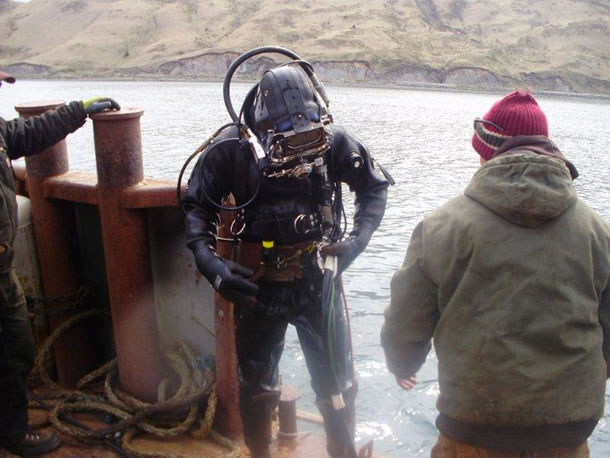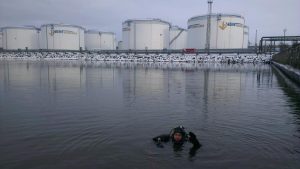Monitoring of seabed sediments in the port of Riga: a comprehensive approach to data acquisition
SIA "Dronelab" team – divers, bathymetry specialists, underwater drone specialists, work supervisors and the team of specialists engaged perform various underwater works, including monitoring of seabed sediments, contacts Valters Preimanis, tel. 220-77-202.
Seabed monitoring is essential to assess the impact on the environment and ensure sustainable management of port areas. A comprehensive monitoring system has been established in accordance with the monitoring program of the seabed storage of the port of Riga coordinated by the State Environmental Service. The purpose of this essay is to outline the procedures and parameters involved in the monitoring process, including sampling, analysis, and preparation of monitoring reports.
Monitoring parameters and sampling
The monitoring program includes several parameters that provide valuable insight into the condition of seabed deposits. The following samples are taken at each monitoring station:
- Granulometric composition: the top layer of soil (0-5 cm) is analyzed to determine the particle size distribution. This information helps assess sediment transport and potential sedimentation problems.
- Macrozoobenthos species composition: macrozoobenthos species composition, number (ex/m3) and biomass (g/m2 wet weight) are recorded. These data serve as an indicator of the ecological health and biodiversity of the seabed ecosystem.
- Heavy metal content: The topsoil is analyzed for the presence of heavy metals including Pb, Cu, Cr, Zn, Fe, Cd, Mn, Hg and Ni. These measurements help identify potential contamination and assess environmental impact.
- Oil hydrocarbon content: soil samples are tested for oil hydrocarbon content (μg/l). This analysis is very important for monitoring the presence of oil spills or other hydrocarbon contaminants.
Sampling is carried out by certified specialists equipped with appropriate instruments under the supervision of the inspector of the State Environmental Service. All samples are sent to an accredited laboratory for analysis.
Preparation of the monitoring report: After the completion of the monitoring activities, a comprehensive monitoring report is prepared. The report includes the following key information:
- Assessment of the state of the environment: the report compares current monitoring results with past data to assess the state of the environment. This assessment provides valuable insight into any changes or trends over time.
- Soil Placement History: The report details previous soil placement, clearing or dredging operations. It includes information on the source of the soil, the amount placed, the duration of placement and the time since the last placement.
- Impact Assessment: When available, soil quality research materials conducted prior to dredging, such as granulometric and chemical soil analyses, are used to assess the impact of the re-placed soil on the disposal site.
- The monitoring report is prepared for each monitoring period and must be submitted electronically to the Riga Freeport Authority and the State Environmental Service within two months after each monitoring period. It is coordinated with the State Environmental Service to ensure accurate and reliable reporting.
Monitoring of seabed deposits in the port of Riga is an essential aspect of environmental management and sustainable development. By systematically collecting and analyzing samples, including particle size composition, macrozoobenthos species composition, heavy metal content and petroleum hydrocarbon content, a comprehensive understanding of the state of the environment is achieved. The preparation of monitoring reports provides valuable insight into the impact of soil placement and helps to effectively manage the port's seabed deposits. By observing the monitoring program agreed by the State Environmental Service, the Port of Riga can ensure the sustainability of its operations in the long term, while preserving the marine ecosystem.
References:
- SIA "Dronelab" team - divers, bathymetry specialists, underwater drone specialists, work supervisors and the team of specialists involved perform various underwater works, including monitoring of seabed sediments, contacts Valters Preimanis, tel. 220-77-202.
- State Environmental Service. (2022). "The coordinated monitoring program of the bottom storage in the sea of the port of Riga."
- Environmental monitoring laboratory. (2021). "Certificate of Accreditation." [Provide appropriate credential information]


